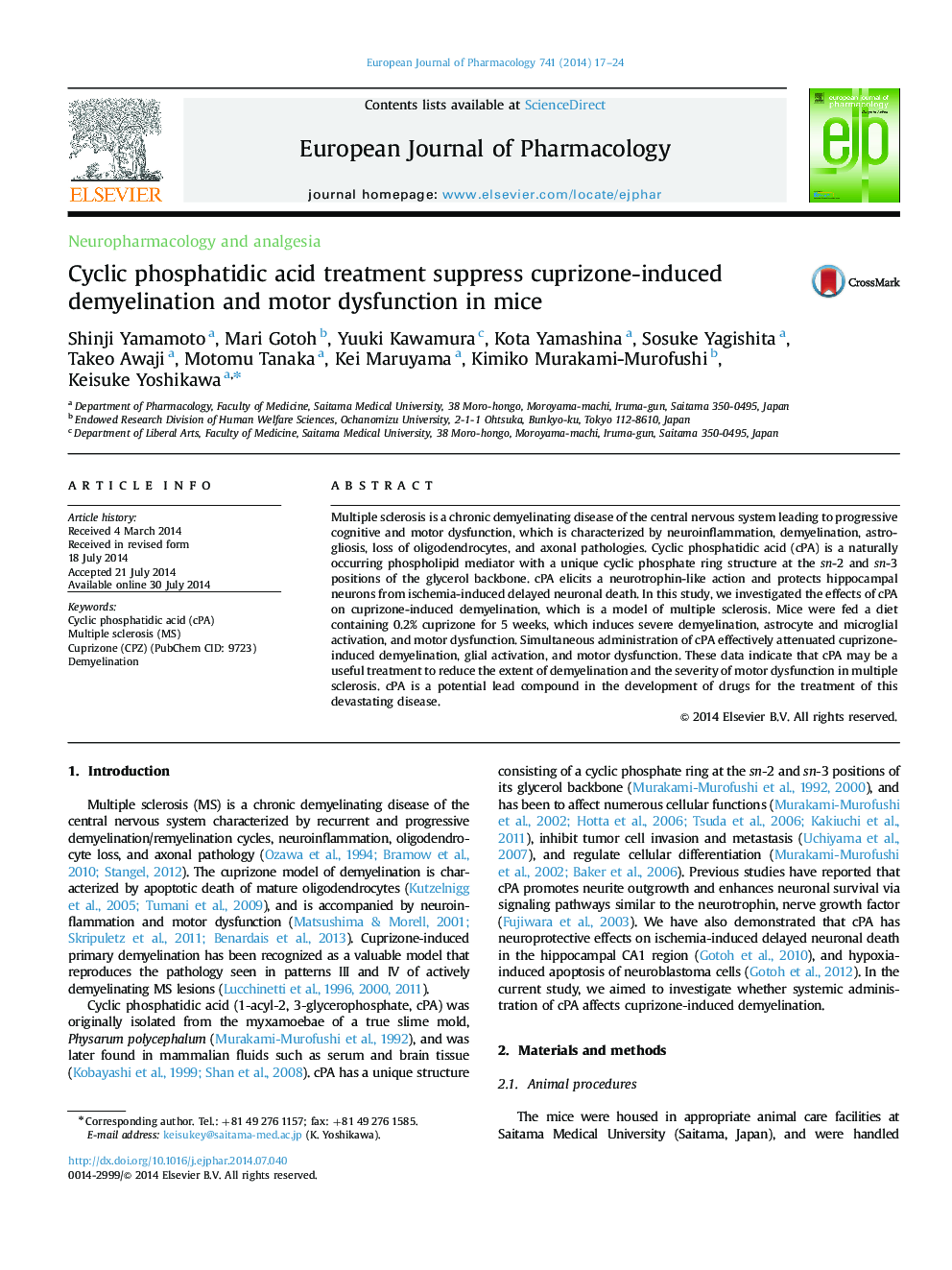| Article ID | Journal | Published Year | Pages | File Type |
|---|---|---|---|---|
| 5827618 | European Journal of Pharmacology | 2014 | 8 Pages |
Abstract
Multiple sclerosis is a chronic demyelinating disease of the central nervous system leading to progressive cognitive and motor dysfunction, which is characterized by neuroinflammation, demyelination, astrogliosis, loss of oligodendrocytes, and axonal pathologies. Cyclic phosphatidic acid (cPA) is a naturally occurring phospholipid mediator with a unique cyclic phosphate ring structure at the sn-2 and sn-3 positions of the glycerol backbone. cPA elicits a neurotrophin-like action and protects hippocampal neurons from ischemia-induced delayed neuronal death. In this study, we investigated the effects of cPA on cuprizone-induced demyelination, which is a model of multiple sclerosis. Mice were fed a diet containing 0.2% cuprizone for 5 weeks, which induces severe demyelination, astrocyte and microglial activation, and motor dysfunction. Simultaneous administration of cPA effectively attenuated cuprizone-induced demyelination, glial activation, and motor dysfunction. These data indicate that cPA may be a useful treatment to reduce the extent of demyelination and the severity of motor dysfunction in multiple sclerosis. cPA is a potential lead compound in the development of drugs for the treatment of this devastating disease.
Keywords
Related Topics
Life Sciences
Neuroscience
Cellular and Molecular Neuroscience
Authors
Shinji Yamamoto, Mari Gotoh, Yuuki Kawamura, Kota Yamashina, Sosuke Yagishita, Takeo Awaji, Motomu Tanaka, Kei Maruyama, Kimiko Murakami-Murofushi, Keisuke Yoshikawa,
